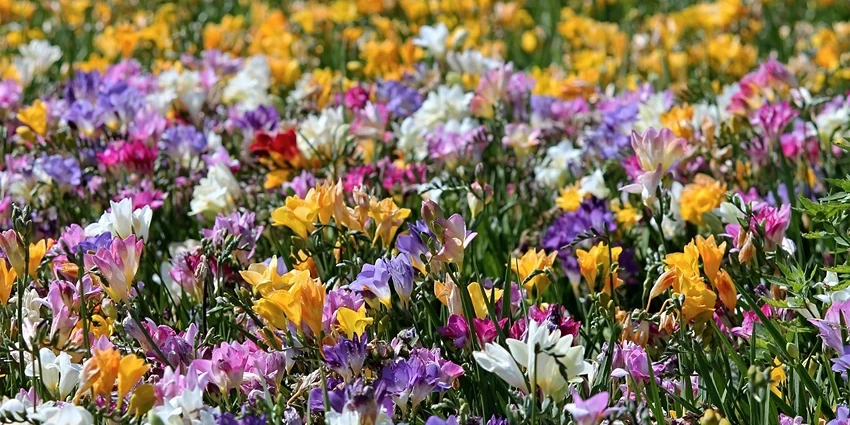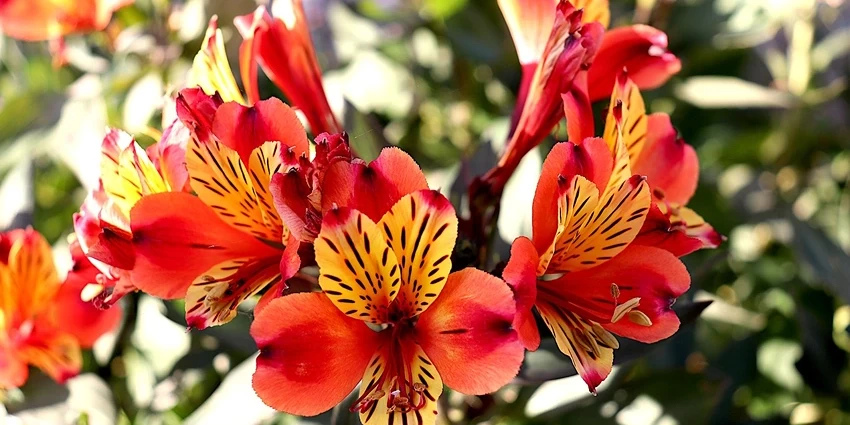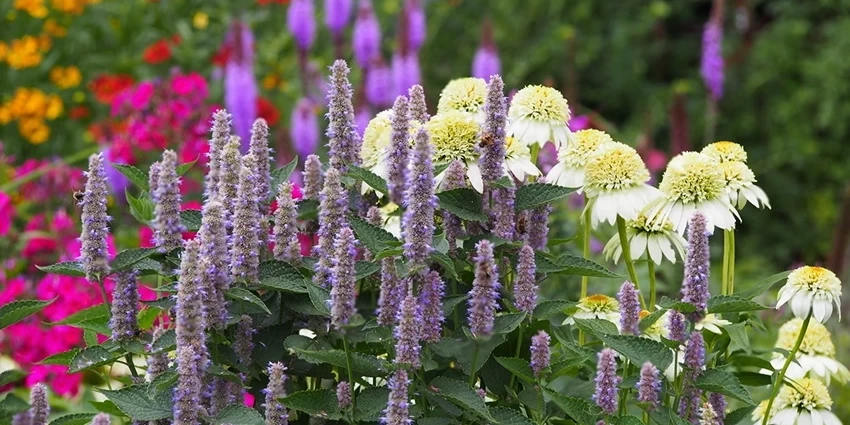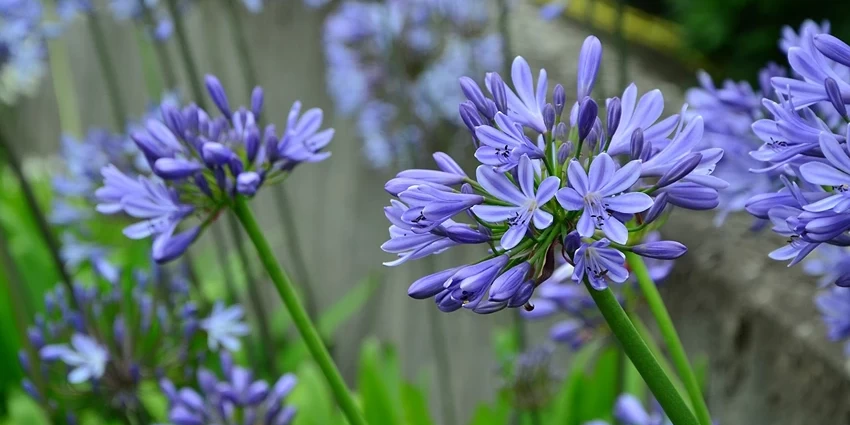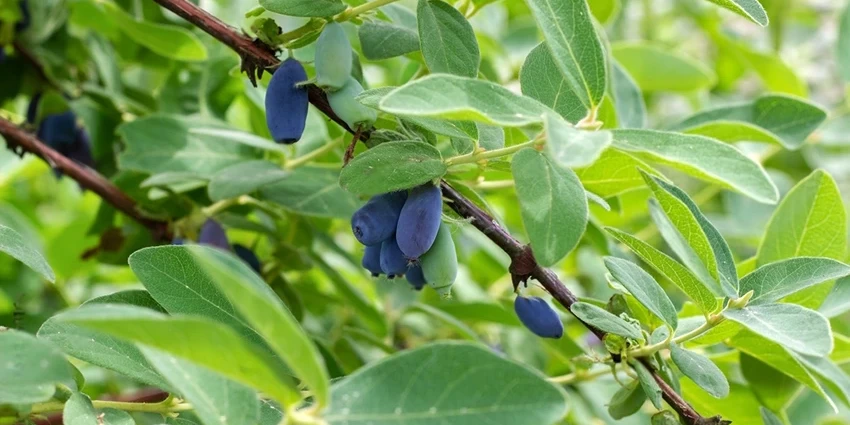All products were chosen independently by our editorial team. This review contains affiliate links and we may receive a commission for purchases made. Please read our affiliates FAQ page to find out more.
Home » How to » Grow Plants » How to grow Freesias
Freesias, with their vibrant colors and enchanting fragrance, have a way of capturing the hearts of garden enthusiasts. These trumpet-shaped beauties are not just a feast for the eyes but also a delight for the senses. Whether you’re a seasoned gardener or just starting, growing freesias can add a touch of elegance to your garden or home.
How to grow Freesias
To grow Freesias, plant corms in well-drained soil with full sunlight. Water moderately, keeping the soil consistently moist. In the UK climate, Freesias thrive with care, offering fragrant blooms in a variety of colours, adding charm and elegance to your garden with minimal effort.
Register for our latest in-depth reviews and product round-ups from the experts.
Enter your email address below to receive our monthly review emails.
By entering your details, you are agreeing to our terms and conditions and privacy policy. You can unsubscribe at any time.
Introduction to Freesias
Freesias, originating from South Africa, are known for their upward-facing blossoms and come in a wide range of colors. They are perfect for indoor growth on sunny windowsills or as a vibrant addition to your garden.
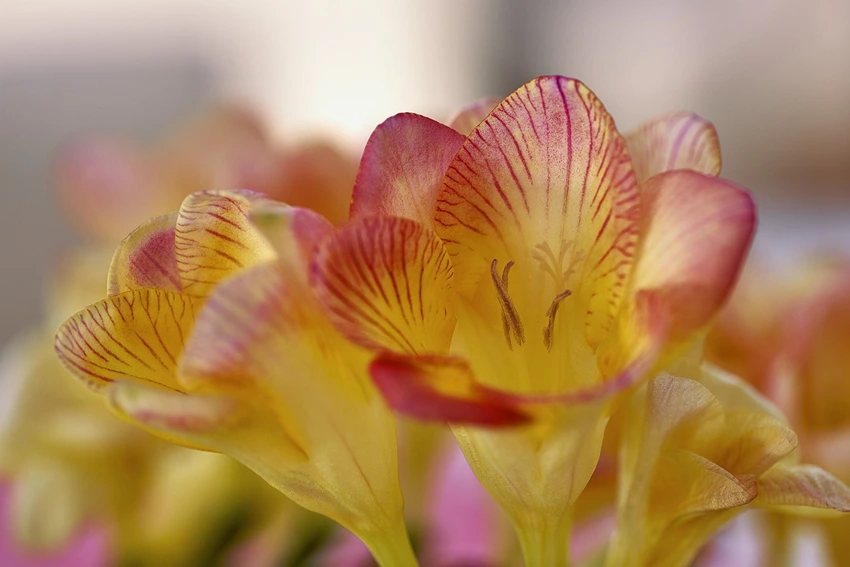
The Origin and Characteristics of Freesias
Freesias are a symbol of trust and innocence. They are perennials, meaning they can bloom year after year, making them a long-term companion for your garden.
Why Choose Freesias for Your Garden?
- Aesthetic Appeal: Their bright colors and unique shape add beauty to any space.
- Fragrance: Freesias are known for their sweet, citrusy scent.
- Versatility: Suitable for gardens, pots, and as cut flowers.
Understanding Freesia Varieties
There are numerous varieties of freesias, each with its unique color and charm. From classic whites to vibrant reds and yellows, there’s a freesia for every taste.
Cultivating Freesias: A Step-by-Step Guide
Growing freesias is a rewarding experience. Here’s how to get started:
Selecting the Right Location for Freesias
- Sunlight: Freesias need full sun or light morning shade.
- Soil: Well-drained soil is essential for healthy growth.
Planting Freesia Corms
- Depth: Plant corms 2 inches deep.
- Spacing: Keep a distance of 2-4 inches between each corm.
- Group Planting: Plant in groups or masses for a striking display.
When to Plant Freesia Bulbs
- In warmer zones (USDA 9+): Plant in fall.
- In cooler zones: Plant in spring and consider container planting for easy winter storage.
Watering and Feeding Your Freesias
- Watering: Keep the soil moist but not soggy.
- Fertilizing: Use a bulb fertilizer in spring following label instructions.
Managing Pests and Diseases in Freesias
Regular inspection and preventive measures can keep common pests and diseases at bay.
Pruning and Maintenance of Freesias
- Deadheading: Remove faded flowers to maintain appearance.
- Foliage Care: Allow foliage to die back naturally.
Harvesting and Storing Freesias
- Cutting for Vases: Cut stems early in the morning and place them in water immediately.
- Storing Corms: In cooler areas, dig up and store corms for the next season.
Propagating Freesias for More Blooms
Propagate freesias through division or by collecting seeds from mature plants.
Freesia Flower Care
- Moisture: Freesias need consistent moisture during the growing season.
- Post-Bloom Care: Allow the soil to dry out once flowers fade.
Freesias as Cut Flowers
- Cutting Technique: Cut stems at a slight angle under water.
- Vase Life: Change water daily to extend the life of cut freesias.
Table: Freesia Varieties and Their Characteristics
| Variety | Color | Scent |
| Single Red | Red | Strong |
| Golden Yellow | Yellow | Citrusy |
| Pure White | White | Mild |
| Deep Blue | Blue | Rich |
Table: Freesia Planting and Care Guide
| Aspect | Details |
| Planting Depth | 2 inches |
| Spacing | 2-4 inches |
| Sunlight | Full sun/light shade |
| Watering | Keep moist |
| Fertilizing | Bulb fertilizer in spring |
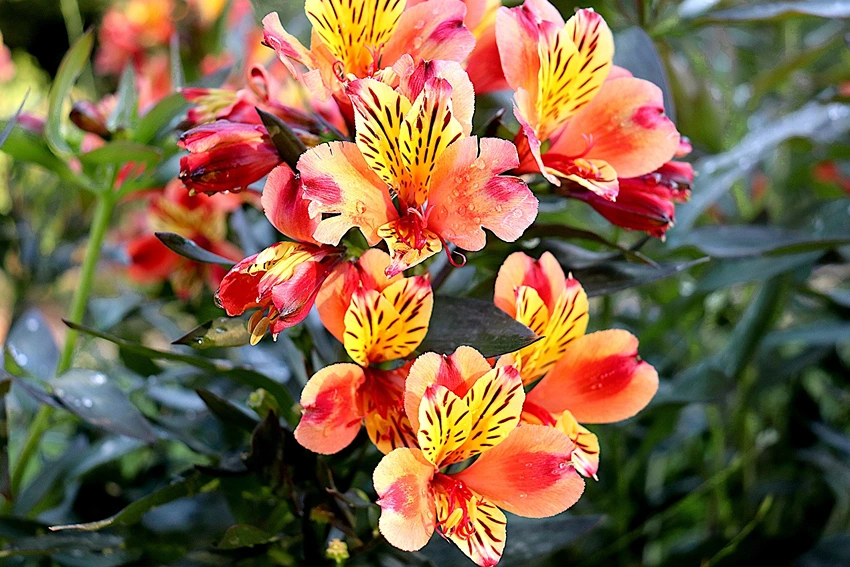
Managing Pests and Diseases in Freesias
Freesias, like any garden plant, can face a few challenges. Here’s how to keep them healthy:
Common Freesia Pests
- Aphids: These pests can cause leaves and flowers to twist or yellow. Regular spraying or wiping can control their population.
- Slugs and Snails: These mollusks chew on leaves and flowers. Handpicking and beer traps are effective solutions.
Freesia Diseases
- Bacterial Soft Rot: This disease causes water-soaked spots on leaves and stems. It’s best to discard infected plants to prevent spread.
- Fusarium Wilt: This incurable fungal disease causes wilting and yellowing of leaves. Improving garden drainage can help prevent it.
- Iris Leaf Spot: Characterized by yellow to green lesions on leaves. Removing infected tissue and ensuring good drainage can control this disease.
Table: Common Freesia Pests and Diseases
| Problem | Symptoms | Solution |
| Aphids | Twisted/yellow leaves | Spray/wipe regularly |
| Slugs/Snails | Chewed leaves/flowers | Handpick, beer traps |
| Bacterial Soft Rot | Water-soaked spots | Discard infected plants |
| Fusarium Wilt | Wilting, yellow leaves | Improve drainage |
| Iris Leaf Spot | Yellow-green lesions | Remove infected tissue |
Propagating Freesias for More Blooms
Propagating freesias can be a rewarding experience. Here’s how to do it:
Division
- When: After the blooming season.
- How: Gently divide the corms and replant them.
Seed Collection
- When: Once the flowers have faded.
- How: Collect seeds and sow them in well-drained soil.
Freesia Flower Care
Ensuring your freesias are well-cared for will reward you with vibrant blooms:
Watering
- Frequency: Regularly during the growing season.
- Post-Bloom: Allow soil to dry out after flowers fade.
Fertilizing
- When: In spring.
- Type: Use a bulb fertilizer following label instructions.
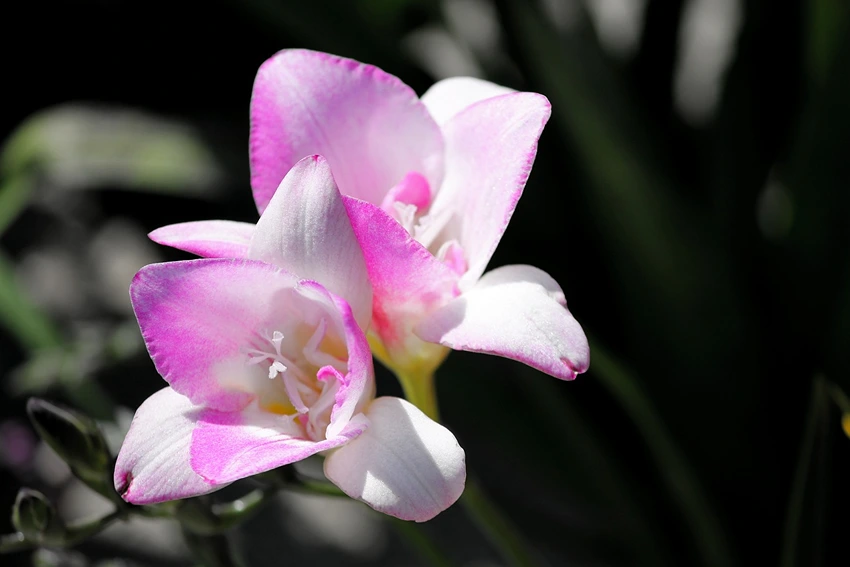
Freesias as Cut Flowers
Freesias make excellent cut flowers. Here’s how to maximize their vase life:
Cutting Technique
- When: Early morning.
- How: Cut stems at a slight angle under water.
Vase Life
- Tip: Change water daily to extend life.
Frequently Asked Questions
Water regularly during the growing season, but allow the soil to dry out after blooming.
Yes, freesias can grow in full sun or light morning shade.
Regular inspection and preventive measures like spraying for aphids and setting traps for slugs and snails can help.
Eleanor is the quintessential spirit of the British gardener — passionate, dedicated, and endlessly curious about the natural world. Born and raised amidst the verdant landscapes of the Cotswolds, she developed an early love for the outdoors, often spending hours in the family garden with her hands buried in the soil, nurturing every type of plant she could find.


